How to copy folder structure to new pst data file in Outlook?
For some Outlook users, they tend to use some special folder structure for daily work in the pst data file. But for a long time using the old data file, it will getting bulky in your Outlook. Actually, you can start with a new pst data file with the same folder structure of the old pst data file in Outlook. In Outlook, you can copy folder structure to new pst data file with the archive function. Please browse the below tutorial for more details.
Copy folder structure to new pst data file in Outlook
- Enhance your email productivity with AI technology, enabling you to quickly reply to emails, draft new ones, translate messages, and more efficiently.
- Automate emailing with Auto CC/BCC, Auto Forward by rules; send Auto Reply (Out of Office) without requiring an exchange server...
- Get reminders like BCC Warning when replying to all while you're in the BCC list, and Remind When Missing Attachments for forgotten attachments...
- Improve email efficiency with Reply (All) With Attachments, Auto Add Greeting or Date & Time into Signature or Subject, Reply Multiple Emails...
- Streamline emailing with Recall Emails, Attachment Tools (Compress All, Auto Save All...), Remove Duplicates, and Quick Report...
Copy folder structure to new pst data file in OutlookM
In Outlook, you can use the archive feature to create a new pst date file with the same folder structure of the old one. Please do as follows.
1. Open the Archive dialog box.
1). In Outlook 2010 and 2013, please click File > Info > Cleanup Tools > Archive. See screenshot:
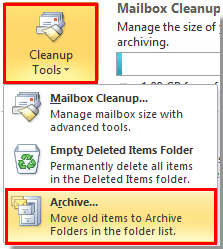
2). In Outlook 2007, click File > Archive.
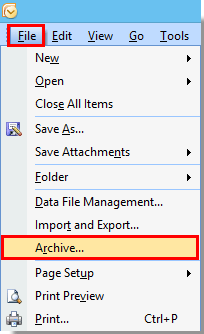
2. In the Archive dialog box, please do as follows.
1). Select Archive this folder and all subfolders option;
2). Select the root of the folders which you would like to copy the folder structure based on it;
3). In the Archive items older than box, specify a past date that no emails will get moved. For example, if the oldest email in your mail folder was stored in 02/01/2013, you can set the archive items older than box as 01/01/2013;
4). Click the Browse button. See screenshot:
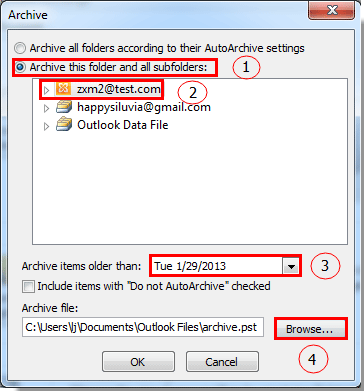
3. Then the Open Outlook Data Files dialog box pops up. Click the OK button.
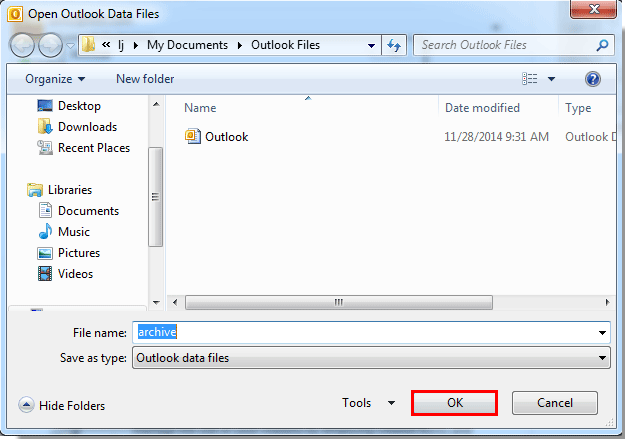
4. Click the OK button when it returns to the Archive dialog box.
5. Then Outlook starts archiving.

6. After archiving, a new Archive pst data file is displaying in the Navigation Pane with the same folder structure of the one you specified above.
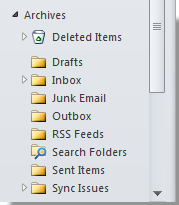
7. Now you need to get into the Account Settings dialog box to rename this data file.
1). In Outlook 2010 and 2013, click File > Info > Account Settings > Account Settings.
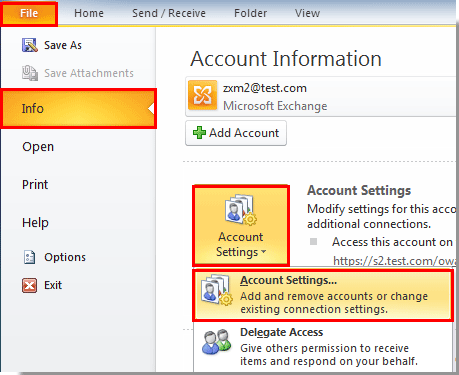
2). In Outlook 2007, click Tools > Account Settings.
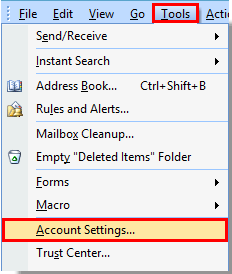
8. In the Account Settings dialog box, click the Data Files tab, select the Archives data file which you are created just now in the box, and click the Settings button. See screenshot:
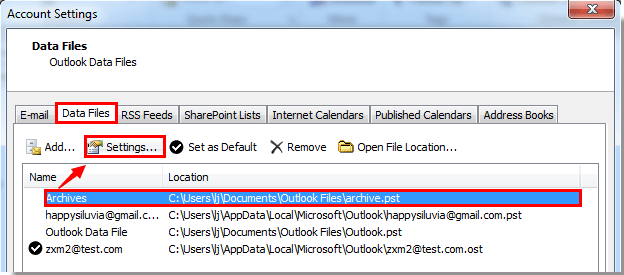
9. In the Outlook Data File dialog box, rename the data file in the Name box, then click the OK button.
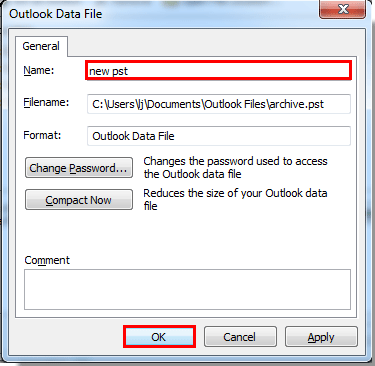
10. Close the Account Settings dialog box.
Now you can see the new pst data file is renamed successfully.
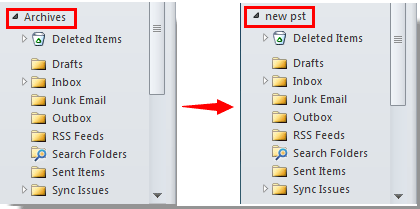
Best Office Productivity Tools
Experience the all-new Kutools for Outlook with 100+ incredible features! Click to download now!
📧 Email Automation: Auto Reply (Available for POP and IMAP) / Schedule Send Emails / Auto CC/BCC by Rules When Sending Email / Auto Forward (Advanced Rules) / Auto Add Greeting / Automatically Split Multi-Recipient Emails into Individual Messages ...
📨 Email Management: Recall Emails / Block Scam Emails by Subjects and Others / Delete Duplicate Emails / Advanced Search / Consolidate Folders ...
📁 Attachments Pro: Batch Save / Batch Detach / Batch Compress / Auto Save / Auto Detach / Auto Compress ...
🌟 Interface Magic: 😊More Pretty and Cool Emojis / Remind you when important emails come / Minimize Outlook Instead of Closing ...
👍 One-click Wonders: Reply All with Attachments / Anti-Phishing Emails / 🕘Show Sender's Time Zone ...
👩🏼🤝👩🏻 Contacts & Calendar: Batch Add Contacts From Selected Emails / Split a Contact Group to Individual Groups / Remove Birthday Reminders ...
Use Kutools in your preferred language – supports English, Spanish, German, French, Chinese, and 40+ others!


🚀 One-Click Download — Get All Office Add-ins
Strongly Recommended: Kutools for Office (5-in-1)
One click to download five installers at once — Kutools for Excel, Outlook, Word, PowerPoint and Office Tab Pro. Click to download now!
- ✅ One-click convenience: Download all five setup packages in a single action.
- 🚀 Ready for any Office task: Install the add-ins you need, when you need them.
- 🧰 Included: Kutools for Excel / Kutools for Outlook / Kutools for Word / Office Tab Pro / Kutools for PowerPoint